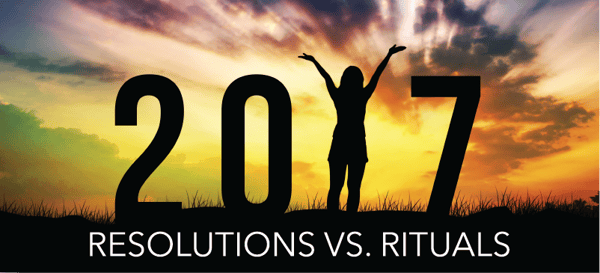
Resolutions vs. Rituals
By Al Curnow, Senior Consultant
It\’s that time of year again. It\’s a new year, a fresh start, a time to think of the year ahead and all the possibilities. It\’s also a time many decide that they\’re going to do things differently this year. We\’re going to eat better, exercise more and read more. In fact, 40% of all Americans will make New Year\’s resolutions committing to making personal changes. Unfortunately, according to a recent study, only 8% of those people will be successful in achieving their resolution.
Why so much failure?
Why is there such a high failure rate among those that make New Year\’s resolutions? Quite simply, it\’s hard to change behaviors. It requires self-discipline, and self-discipline, like a muscle, needs to be developed. Yet most people give up on their resolutions well before they\’re able to develop their self-discipline muscle.
It\’s no different for organizations. We\’re all familiar with new company initiatives that are introduced with great fanfare, only to be forgotten when we get busy or distracted. It\’s difficult to have the discipline necessary to keep that new initiative going.
The importance of rituals
Therein lies the importance of rituals. Rituals are the key to making things last. Rituals keep us on course, well after the initial motivation wears off. They help us to stay on track and to turn the new behavior into a habit. When it becomes a habit, it\’s no longer difficult to keep at it. It\’s just what we do.
On a personal level, a ritual may be as simple as meeting a good friend each morning for a hike. We\’re much more likely to keep that commitment when we know we have a friend waiting for us to take that hike. Before we know it, we couldn\’t imagine NOT taking that hike each day.
In an organization, a ritual might involve beginning each meeting with a brief discussion about a particular behavior that\’s critical to its culture. It\’s done at  EVERY meeting, EVERY time. Soon, it just becomes a habit. As it becomes a habit, focus on the desired behavior grows. Eventually, this behavior becomes internalized and becomes a natural and regular part of the culture.
EVERY meeting, EVERY time. Soon, it just becomes a habit. As it becomes a habit, focus on the desired behavior grows. Eventually, this behavior becomes internalized and becomes a natural and regular part of the culture.
In 2017, if you\’re serious about driving high performance as a way of doing business, rituals must be a part of your culture plan. At High Performing Culture, we\’ve taught well over 2500 CEOs in organizations all across the country how to use rituals to build and sustain their cultures. If you\’d like to learn more about how to do this, just give us a call or shoot us an email.
%C2%AE-08.png?width=3812&height=693&name=CultureWise%20logo%20(horz)%C2%AE-08.png)